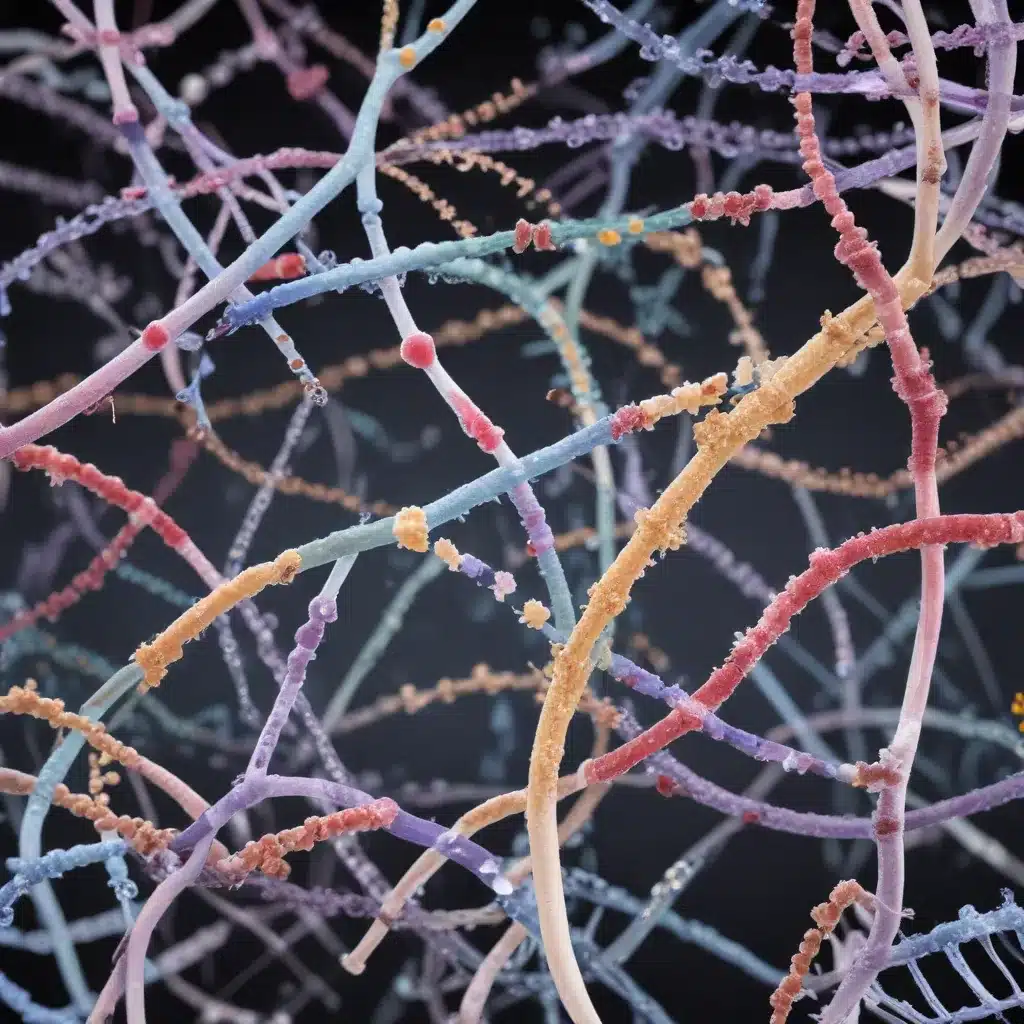
Comprehensive Insights into Microbial Sugar Metabolism and Regulatory Networks
As a seasoned IT professional, I’m excited to dive into the fascinating world of carbohydrate utilization in microbes. While this topic may seem far removed from the typical technology and computer repair focus, understanding the intricacies of how bacteria and other microorganisms metabolize and regulate the use of sugars can provide valuable insights that translate across disciplines.
Carbohydrates: The Lifeblood of Microbial Metabolism
Carbohydrates constitute the most abundant class of organic substances found in nature, with plant cell walls comprising approximately 70% of worldwide biomass production. Yet, only about 2% of this vast sugar-rich resource is currently utilized by humans. This untapped potential represents a significant opportunity for developing novel biofuel and biotechnology applications.
At the microbial level, sugar utilization pathways are the major feedstock for central metabolism, providing carbon and energy for a vast array of heterotrophic bacteria. While these pathways and their transcriptional regulation have been extensively studied in model organisms like Escherichia coli and Bacillus subtilis, the diversity of carbohydrate chemical structures and the corresponding variability in microbial sugar utilization genes, pathways, and regulatory networks present a significant challenge in projecting this knowledge to more distantly related bacteria.
Integrative Genomics: Unlocking the Secrets of Carbohydrate Utilization
To address this challenge, researchers have turned to an integrative approach that combines comparative genomics, metabolic reconstruction, and regulatory network analysis. This powerful combination enables substantial improvements in the quality of functional gene annotations and metabolic pathway predictions, ultimately leading to more accurate metabolic modeling.
One such study, focusing on the hyperthermophilic marine bacterium Thermotoga maritima, provides a fascinating example of how this integrative approach can unravel the complexities of carbohydrate utilization networks. Thermotoga species are known for their remarkable ability to ferment a wide range of simple and complex carbohydrates, including glucose, starch, cellobiose, xylan, and pectin, while producing hydrogen, carbon dioxide, and acetate as byproducts.
Reconstructing the Carbohydrate Utilization Regulatory Network in Thermotoga
The researchers began by using a bioinformatics workflow to identify ~240 genes potentially involved in carbohydrate metabolism within the Thermotoga maritima genome. This set included genes encoding enzymes, transporters, and regulators associated with the utilization of mono-, di-, oligo-, and polysaccharides.
Next, they employed a comparative genomics-based approach to reconstruct the transcriptional regulatory network controlling this extensive sugar catabolic machinery. By analyzing the genomic context and conservation of regulator-binding sites across 11 Thermotogales genomes, the researchers were able to identify DNA-binding motifs and regulons for 19 orthologous transcription factors (TFs).
The resulting regulatory network in T. maritima contains 181 genes, including those encoding the TFs, sugar catabolic enzymes, and ABC-family transporters. Interestingly, in contrast to many previously described bacteria, Thermotoga does not appear to employ global regulatory factors to orchestrate its carbohydrate utilization strategies. Instead, the reconstructed network is composed primarily of local regulators that control specific sugar catabolic pathways.
Validating the Regulatory Network through Experimental Data
To validate the genomics-based regulatory network reconstruction, the researchers performed comprehensive transcriptome analysis of T. maritima cells grown on a variety of mono- and disaccharides, as well as the complex polysaccharide pectin. The obtained gene expression patterns showed a strong correlation with the predicted regulons, confirming the accuracy of the bioinformatics-driven inferences.
For example, the xylose-responsive XylR regulon, the cellobiose-inducible CelR regulon, and the trehalose/glucose-controlled TreR/GluR regulons all demonstrated clear upregulation of their target genes in the presence of the corresponding sugar substrates. Additionally, the researchers were able to experimentally validate the predicted UxaR regulon controlling pectin and galacturonate utilization pathways.
Uncovering Regulatory Interconnections and Evolutionary Insights
The reconstructed regulatory network also revealed fascinating insights into the evolutionary adaptations and interconnections within the carbohydrate utilization systems of Thermotoga.
Unlike many other bacteria, Thermotoga species do not appear to employ global regulators to coordinate their sugar metabolism. Instead, the network is composed primarily of local regulators that control specific catabolic pathways. This suggests a distinct regulatory strategy, potentially tailored to the unique environmental challenges and metabolic requirements of these hyperthermophilic marine bacteria.
Furthermore, the researchers identified several instances of regulatory interconnections between distinct sugar utilization pathways. For example, the xylan catabolic gene clusters were found to be under the dual control of the xylose-responsive XylR and the glucuronate-sensing KdgR regulators. This type of coordinated regulation likely enables efficient utilization of the complex, heterogeneous plant-derived polysaccharides that serve as the primary carbon and energy sources for Thermotoga.
Broader Implications and Applications
While the focus of this study was on the carbohydrate utilization network of Thermotoga maritima, the integrative genomics-based approach demonstrated here has broader implications for understanding microbial metabolism and regulatory strategies across diverse taxonomic groups.
By combining comparative genomics, metabolic reconstruction, and regulatory network analysis, researchers can substantially improve the quality of functional gene annotations, refine associated metabolic pathways, and identify novel enzymes and transporters involved in sugar utilization. This knowledge can then be leveraged to enhance biofuel production, develop more efficient biotechnology applications, and gain deeper insights into the ecological adaptations of microorganisms.
Furthermore, the experimental validation of the reconstructed regulatory networks, using techniques such as transcriptomics and in vitro DNA-binding assays, provides a powerful framework for bridging the gap between computational predictions and real-world biological phenomena.
Conclusion: Unlocking the Complexities of Microbial Carbohydrate Metabolism
The integrative genomics-based reconstruction of the carbohydrate utilization regulatory network in Thermotoga maritima showcases the power of combining bioinformatics, metabolic modeling, and experimental validation to unravel the intricate mechanisms underlying microbial sugar metabolism.
By leveraging the wealth of genomic data and applying advanced computational approaches, researchers were able to gain unprecedented insights into the transcriptional control of sugar catabolism in this hyperthermophilic bacterium. The resulting regulatory network not only improves our understanding of Thermotoga‘s metabolism but also provides a valuable framework for exploring carbohydrate utilization strategies in other taxonomically diverse microorganisms.
As we continue to harness the potential of microbial systems for biotechnological and bioenergy applications, the integrative approach demonstrated in this study will undoubtedly play a crucial role in unlocking the complexities of carbohydrate metabolism and unlocking new avenues for innovation.












